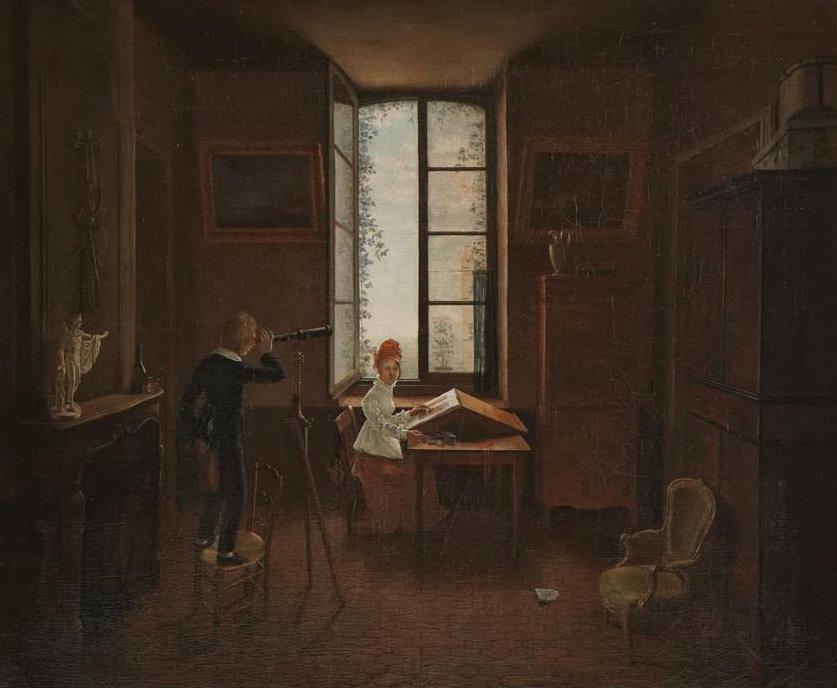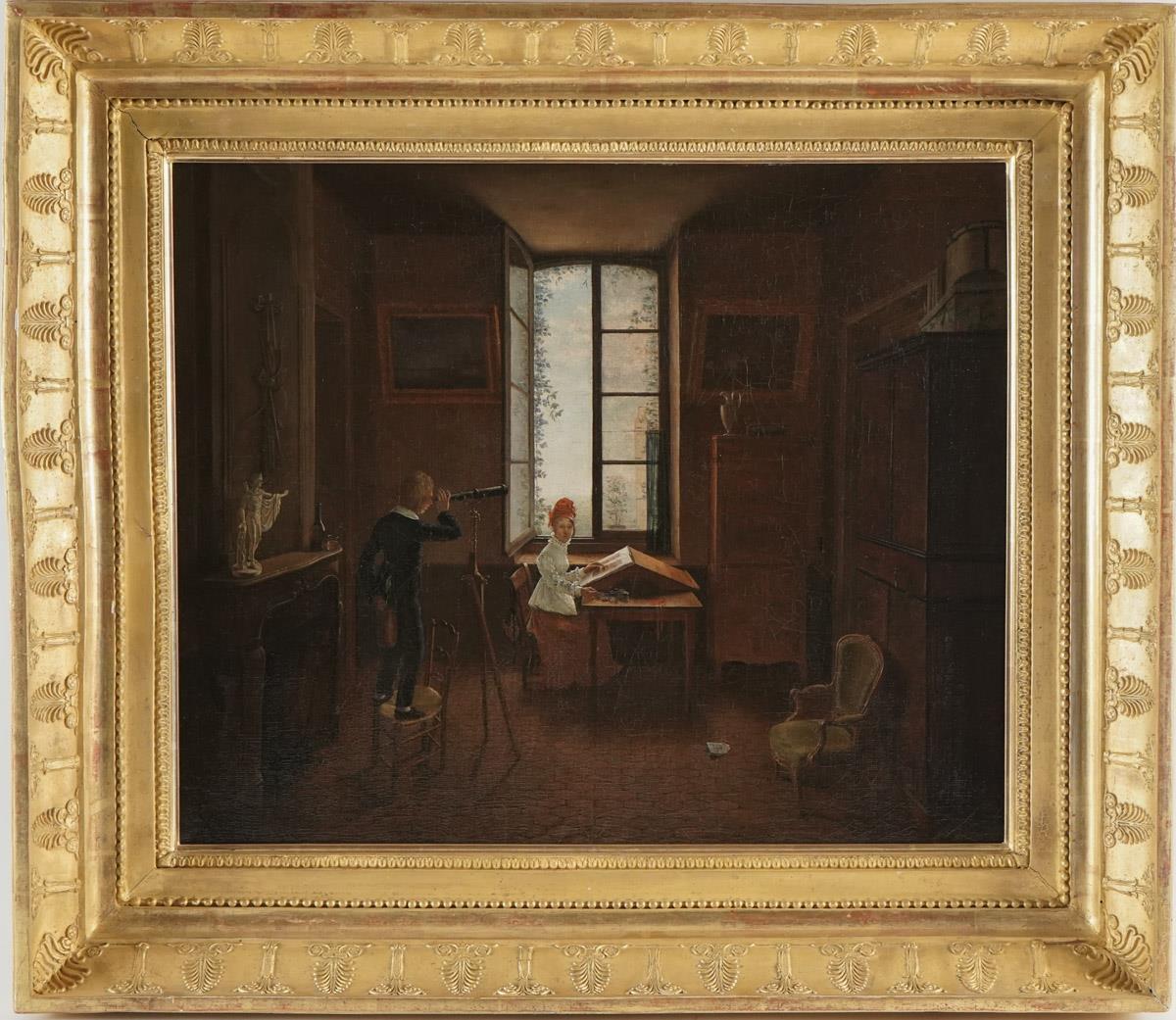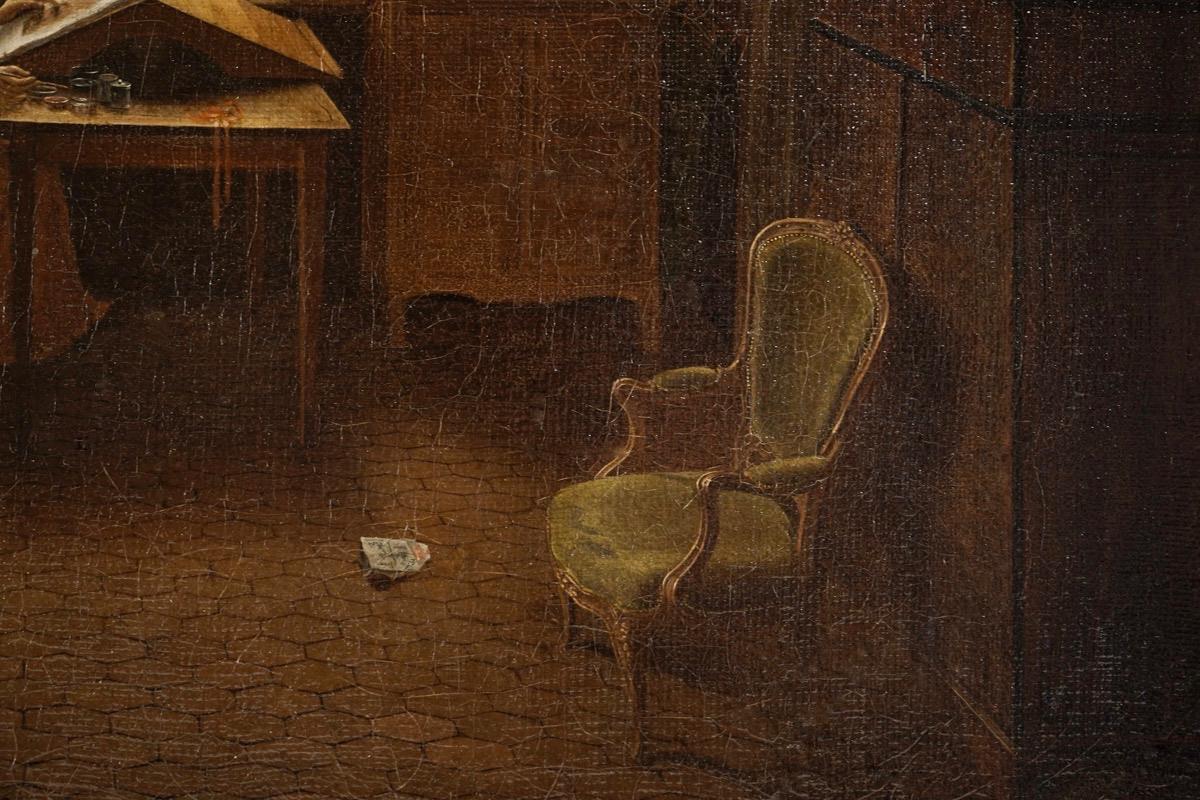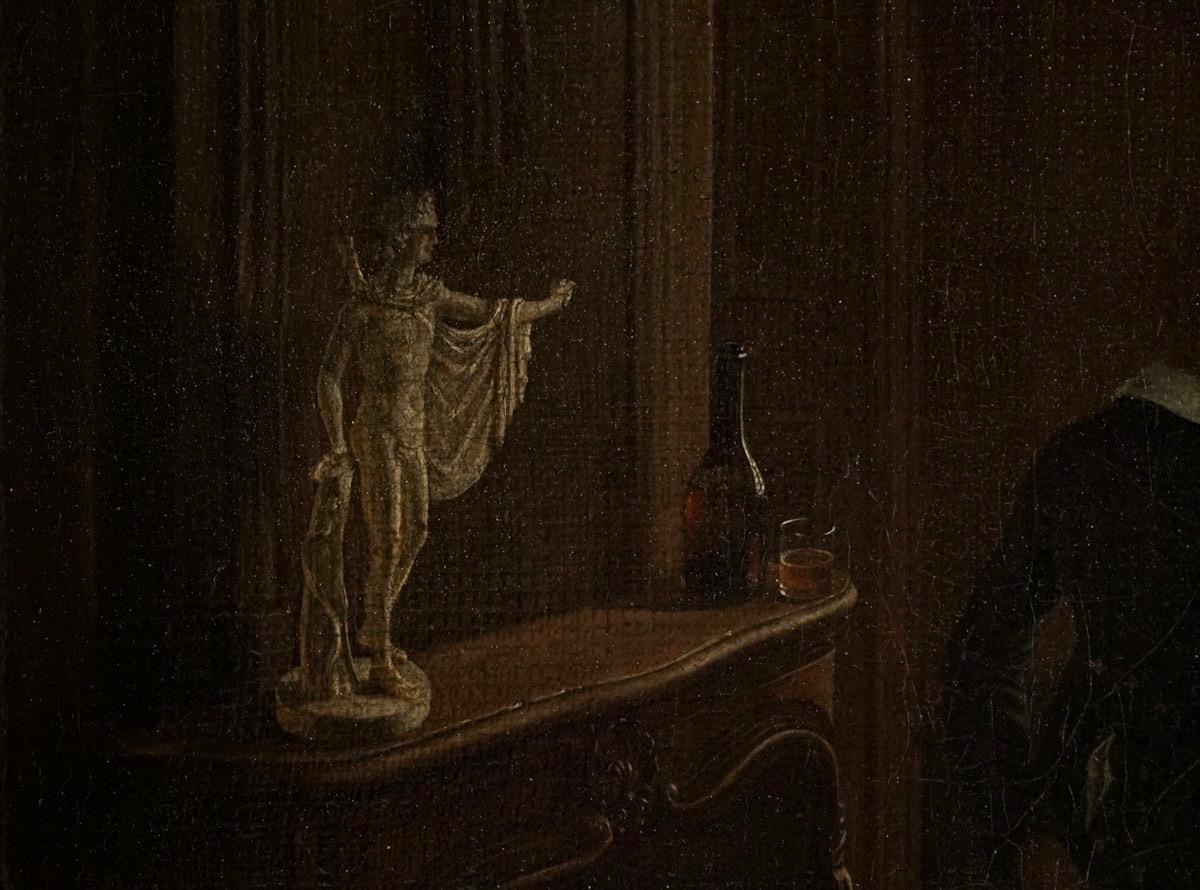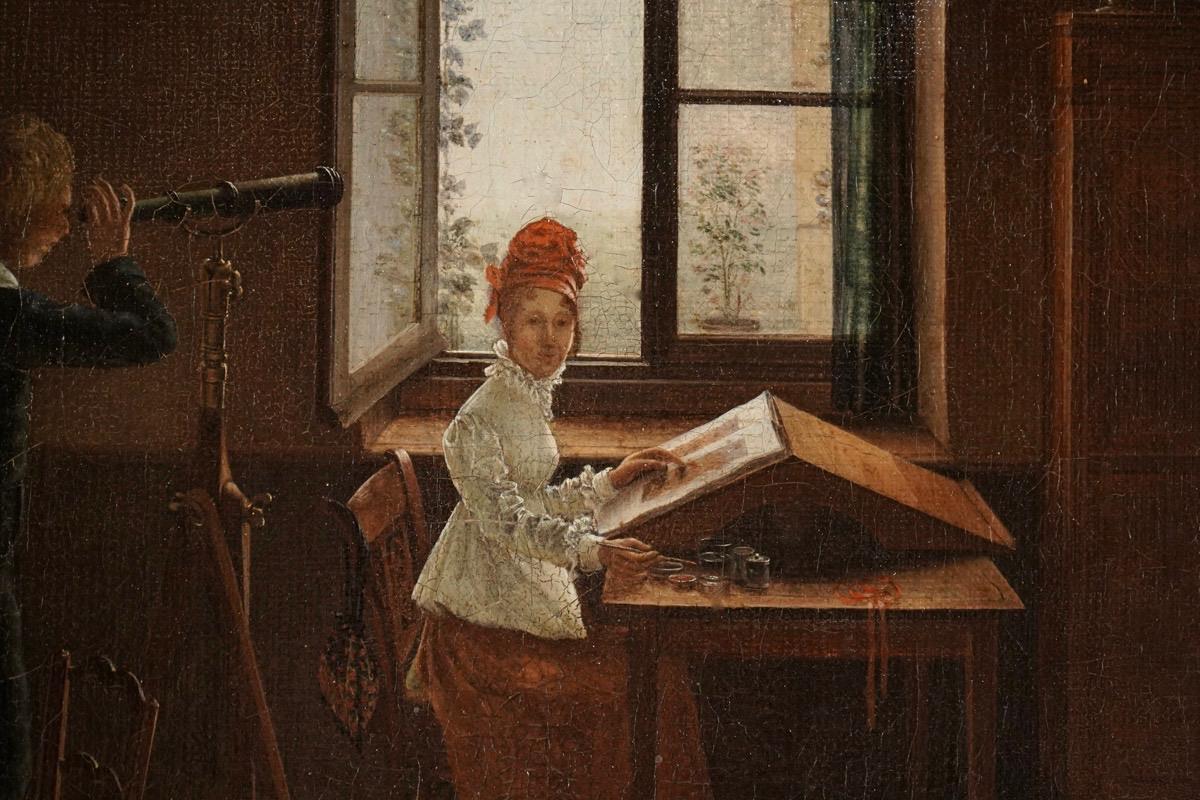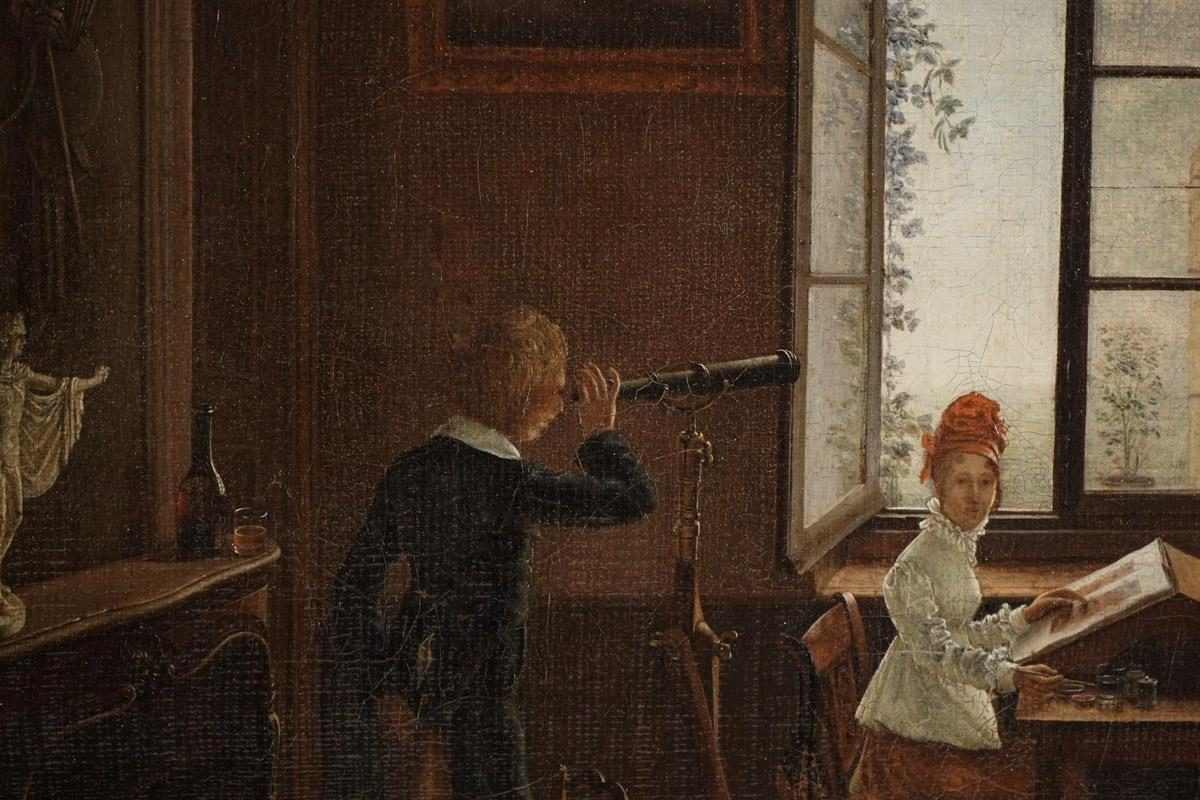Théophile Behaeghel
indoor scene,
The Game of Art , circa 1820
Oil on canvas
Signed and situated “Behaeghel, Paris”
(written upside down on a note fallen on the ground at the bottom right of the board)
Size: 44 x 53cm
With frame: 63 x 72 cm
Price: €23,000
Théophile Behaeghel was born in Ypres, Belgium, in 1975. He goes young to Paris; he attended the workshops of Jacques-Louis David, Pierre-Narcisse Guérin, Jean-Louis Demarne, Jean-Bernard Duvivier and more specifically Pierre Prévost.
He was called to direct the Academy of Lectoure (Gers) in 1822. The painter painted, among other things, the portrait of Charles X and that of the German poet and theoretician Friedrich von Schiller. He lends himself to the exercise of the self-portrait in a few etchings.
The scene takes place in a bourgeois interior in Paris. The room is arranged according to a sensitivity to beautiful objects. Furniture of the taste of the time and works of art come together and harmonize the symmetrical composition: a sculpture (quotation from the Apollo of the Belvedere) rests on the edge of the fireplace, a vase sits on a secretary, two paintings suspended in height flank the window. The attention to detail evokes the meticulousness of Dutch painting.
Two figures punctuate the whole. The first is seated at her desk, the second is mounted on a chair. The young girl gets down to watercolors, the boy, balancing on a chair, looks outward through a telescope.
She raises her head and looks at us, as if a relative or a servant had entered the room and diverted her from her work – as if the young girl, a figure painted on a painting, was realizing her fictional nature. As a spectator of the simulacrum of painting, she observes the amateur spectator and invites him to enter into the work.
The window structures the work and gives it its meaning: it is as much the sign of the separation between the interior space and the exterior space, as that of the opening towards a landscape inaccessible to the eye of the spectator.
The boy becomes the interpreter of his gaze: turned towards the outside, he offers us to see what we do not see. In the spirit of Friedrich’s romanticism, the painter paints the window to build the void that leaves room for our imagination.
Exhibitions:
• Salon de Lille: salon of 1822, n°528, Interior of a village kitchen ; salon of 1825, n°817, A hospitable sister teaching children .
• Salon de Douai: 1826, n°18, The entrance to César’s baths in Cauterets , n°19, An old man cooking , light effect collected in the Pyrenees.
• Bernard Palissy in his studio , nd, Agen Museum of Fine Arts.
• Portrait of a prosecutor, 1834, coll. p., Paris.
Bibliography:
• Emmanuel Bénézit, Dictionary of painters, sculptors, designers and engravers , t. II, Librairie Gründ, reed. 1976, p. 579
• Paul Mesplé, “Behaeghel, Lectourois painter? », Bulletin of the Archaeological and Historical Society of Gers, October 1964, p. 473
• The Rediscovered Salons, Shards of artistic life in northern France , 1815-1848, II, cat. exp. city of lace and fashion, museum of fine arts, museum of Chartreuse, Calais, Dunkirk, Douai, 1993, p. 11

